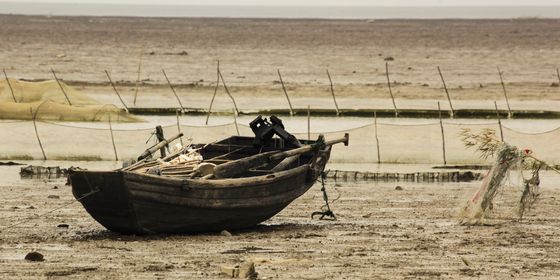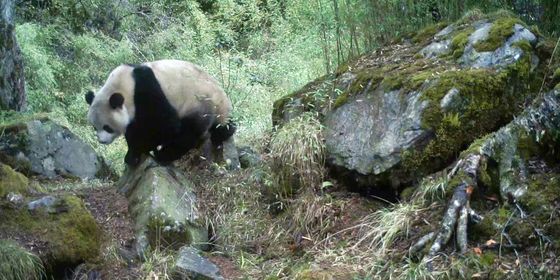As China aims to create 60 national parks by 2035, what will happen to the 12 million human residents inside protected areas?
On the rough cement of a pitch-black village road sometime before midnight, a family hacked at the hind meat from the carcass of a cow.
“It starved to death because there wasn’t enough land to graze,” claimed one man. The family was in a rush to get the cuts to market by morning, as their livelihood largely depended on their cow herd, which grazed illegally within the bounds of Momoge National Nature Reserve, a 1,440-square-kilometer wetland in northeastern Jilin province in which the family lives.
It is estimated that 12 million people live within the borders of China’s sprawling system of over 1,600 nature reserves, where residents and conservationists are set on a collision course.
“Ecological protection and economic development have always been at odds,” sighs Zou Changlin, a park ranger at Momoge. “And we are a classic example of this historical problem.”
The reserve was created in 1981 to protect Siberian cranes, a critically endangered species according to the International Union for the Conservation of Nature, and for which loss of habitat along their migration route is a key threat to survival. As China’s northeast has industrialized over the past century, more and more cranes are squeezed into Momoge’s shallow waters to refuel along their 10,000-kilometer flight.
When Ranger Zou began working in the park in 2003, only around 300 Siberian cranes landed in Momoge each year. Now, a staggering majority of up to 3,200 of the world’s remaining population of 4,000 Siberian cranes land in Momoge each year. “They have nowhere else to go,” says Zou. Yet Momoge’s protection zone also includes 102,000 people who had lived in the area’s 37 villages long before the reserve was built.
Coexistence between humans and nature are a key question facing China’s new system of protected natural areas, as China seeks to create an “ecological civilization,” to quote President Xi Jinping’s guiding philosophy. In the shifting tide of China’s political priorities, environmental targets are coming to the forefront, after decades of promoting rapid economic growth over all else.
China is one of 17 “mega-biodiverse” countries in the world, according to the United Nations Environment Program, hosting 12 percent of plant species and 15 percent of all vertebrates on earth. However, degrading ecosystem health is driving rapid loss of habitat. Since the 1950s, over a half of the country’s coastal wetlands have disappeared to land reclamation; only 5 percent of land cover remains primary forest; more than a quarter of China’s grasslands were lost to farming and mining activities in just a decade, and 90 percent of the country’s remaining grassland is in poor condition.
Last year, the National Development and Reform Commission and Ministry of Natural Resources jointly released ecological targets for natural forests, grasslands, wetlands, coastlines, marine environments, and endangered species, including a goal of creating 60 national parks by 2035.
The central government has been laying the groundwork for national parks for over a decade, approving establishment of a national park management office in 2008, which launched nine pilots in 2015. Two more pilots were added in 2019, and many were declared operational last year. These areas were chosen based on a sweeping national ecosystem mapping project led by Ouyang Zhiyun at the China Academy of Sciences that drew from 100,000 field surveys and 200,000 satellite images to map China’s ecosystems on six indicators.
“I was speaking with some scientists based in the US and elsewhere outside China, and they remarked it’s the kind of ambitious, data-focused project that pretty much only China can pull off,” Rudy D’Alessandro, the US National Parks Services’ international cooperation specialist, said at a public forum at Princeton University’s Woodrow Wilson Center last year.
China’s protected areas are experiencing ongoing reorganization from 13 to just three classifications: national parks, nature reserves, and natural parks. National parks, the crown jewels of China’s protected areas, now have their own dedicated National Park Service. “They are trying to do what America did in 100 years, but in ten years,” Jonathan Jarvis, former director of the US National Parks Service and a consultant to China’s largest national park, Sanjiangyuan, in the northwestern Qinghai province, said in a 2019 conversation with news site Pandaily.
The Myth of the Chinese Wilderness is a story from our issue, “Call of the Wild.” To read the entire issue, become a subscriber and receive the full magazine.













